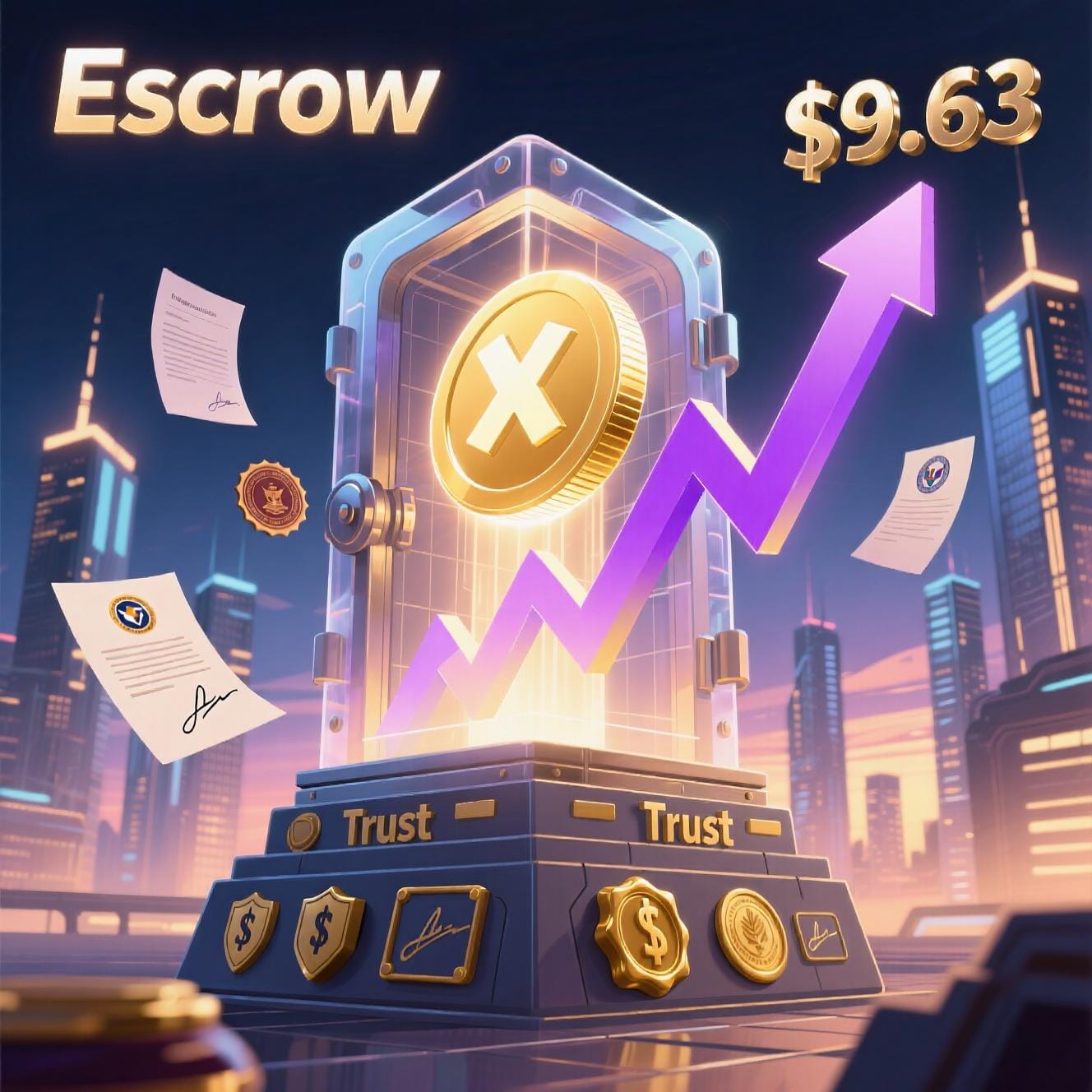XRP Eyes $9.63 as Legal Expert Defends Ripple’s Escrow Strategy
XRP surges 11.3% to $3.28 as analyst Javon Marks predicts a potential $9.63 target. Meanwhile, legal heavyweight Bill Morgan defends Ripple’s escrow system, calling it a stabilizing force—not a supply threat.

XRP Builds Momentum: $9.63 Target Emerges From Historical Patterns
XRP is heating up again.
Up 11.3% in the past week to $3.28, the third-largest cryptocurrency by market cap is regaining bullish traction—and this time, it’s not just traders fueling the move. Analysts, lawyers, and on-chain data are all aligning behind a powerful narrative: XRP’s next leg could be massive.
Market strategist Javon Marks has reignited the long-term bullish case, projecting a +188% rally to $9.63 based on repeating bull-cycle patterns from 2017 and 2021. That target isn’t guesswork—it’s pattern recognition.
Marks points to:
- Similar price structure development compared to prior cycles
- Resurgence in institutional inflows
- Growing on-chain transaction volume
- Clearer regulatory signals post-Ripple vs. SEC
If this cycle follows the same trajectory, $9.63 isn’t a moonshot—it’s a replay.
The Escrow Debate: Flaw or Feature?
For years, one argument has haunted XRP: Ripple’s monthly escrow releases flood the market, creating constant sell pressure.
Now, a prominent legal voice is pushing back—hard.
Bill Morgan, an Australian corporate lawyer and crypto advocate, has launched a full-throated defense of Ripple’s escrow system, calling it a pillar of transparency and stability, not a liability.
Established in 2017, Ripple’s escrow holds 55 billion XRP, releasing up to 1 billion tokens per month—but crucially, any unused amount is re-escrowed. This means:
- No automatic dumping
- Supply is predictable, not speculative
- Institutions can plan around known issuance
Recent data shows escrow holdings at ~35.6B XRP, with 64.36B in circulation. But in practice, Ripple often re-locks over 90% of monthly unlocks, meaning minimal net supply impact.
“Even after eight years,” Morgan argues, “the release of XRP from escrow provides no helpful explanation of significant price movement.” In other words: if XRP drops, it’s not because of escrow—it’s market dynamics.
Even U.S. regulators have acknowledged the mechanism’s intent: to prevent sudden supply shocks and build market confidence.
Why This Matters for Price
Morgan’s argument isn’t just legal nitpicking—it’s market psychology.
When investors believe a token’s supply is chaotic or manipulative, they discount its value. But when issuance is transparent, capped, and disciplined, it becomes a trust signal.
That’s exactly what Ripple’s escrow offers:
- No surprises—releases happen on a fixed schedule
- No waste—unspent tokens go back into escrow
- No central dumping—Ripple doesn’t profit from releases
CTO David Schwartz recently clarified that releases are only recorded on-chain when a triggering transaction is submitted—adding another layer of procedural clarity.
This kind of operational transparency is catnip for institutions.
The Path to $9.63—And Beyond
Marks’ $9.63 target assumes XRP follows its historical playbook:
- A base-building phase (now)
- A breakout above $3.50
- Acceleration toward $6–$7
- Final surge to $9.63 in late-stage mania
But some see even higher.
Macro strategist Gert van Lagen has floated a $34 target, citing a potential market cap shift if XRP becomes the dominant settlement rail for global banks and CBDCs.
While that remains speculative, the foundation is strengthening:
- RippleNet used by hundreds of financial institutions
- CBDC projects with multiple central banks
- ODL (On-Demand Liquidity) adoption growing in emerging markets
With Bitcoin near $120K and altseason warming up, XRP is well-positioned to capture capital seeking high-utility, high-liquidity exposure.
Bottom Line: Confidence Is Returning
The narrative around XRP is shifting.
No longer just a “lawsuit coin” or a “whale-controlled asset,” it’s increasingly seen as a battle-tested digital asset with:
- Clear tokenomics
- Predictable supply
- Real-world utility
- Institutional-grade infrastructure
If buying pressure continues, and the broader market stays strong, $9.63 isn’t fantasy—it’s a cycle repeat waiting to happen.





